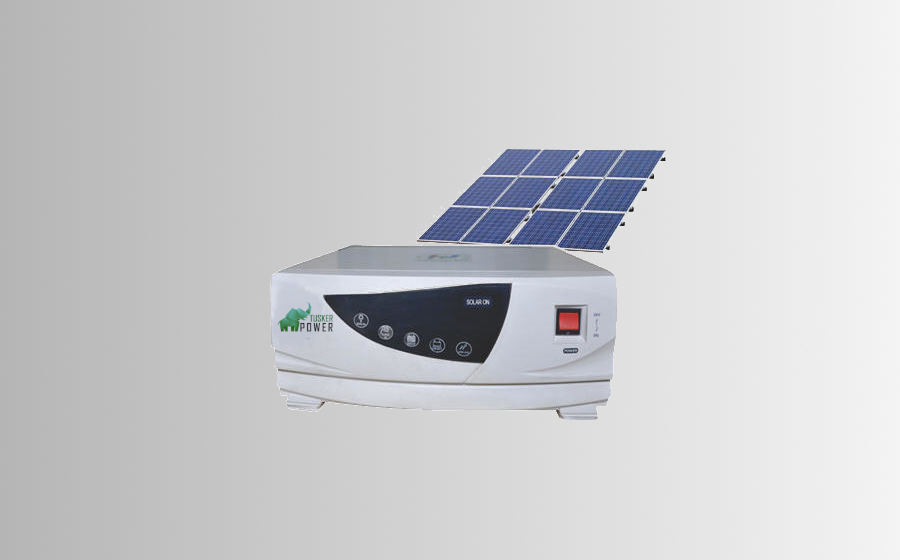
The Cost Benefits of Solar Inverters
Are electricity bills giving you a shock? Switch over to solar inverters and enjoy a significant savings in electricity bills!
A solar inverter (also known as Photo-voltaic inverter) is a key component of a solar PV system. It converts the generated DC current into AC to power appliances. There are several factors to consider when purchasing solar inverters – type, price and savings. In this guide, EuroIndustriel, the no.1 supplier and distributor of solar inverters in India walks you through the cost benefits of solar inverters.
What are the cost savings of solar inverters?

The cost of a solar inverter depends on the type and size for your application. Ideally, the starting price of solar inverters ranges from $150. However, the final cost depends on the number of inverters and the system size for your solar installation.
Usually, the cost of the inverter is included in the initial cost of the solar PV system which include the solar panels as well as batteries. However, keep in mind that solar panels have a longer life than solar batteries. Hence, these batteries have to be replaced at some point.
The cost savings that you can expect from using a solar inverter depends on the size of the system, the amount of energy it produces and the actual electricity consumption. You can get in touch with EuroIndustriel for a detailed cost benefit analysis, depending on your preferred models.
Types of Solar Inverters

Solar inverters can be classified into the following categories:
1. String Inverters
They are the oldest form of solar inverters. The technology has been around for decades. Here, solar panels are arranged in rows or groups, with each panel installed on a string. Multiple strings are connected to a single inverter. The inverter converts the generated DC current into AC current, ready to be used by appliances.
The major drawback of string inverters is that if the performance of one panel is disrupted, due to external damages or shading, then it impacts the performance of the whole array.
2. Micro Inverters
Micro inverters are small in size and have become the inverter of choice for small solar installations. They are fitted directly into solar panels and convert DC to AC directly on the roof. Since, each panel has an individual inverter, the performance of one panel doesn’t affect the other.
Micro inverters make it easy to monitor the performance levels of each solar panel. With micro inverters you can maximise the available space. Panels that are in shade for some parts of the day do not affect the performance of other panels.
The problem with micro inverters is that they are expensive compared to other popular types of inverters. However, this additional cost can be offset by the increased energy production.
3. Power Optimisers
Power optimisers are similar to micro inverters but slightly less expensive. They are also located on each individual solar panel, however instead of converting DC into AC on the roof, they move the DC current to a strong inverter. Just like a micro inverter, you can monitor the performance of each panel.
4. Hybrid Inverters
They are used in a hybrid solar PV system. During times when surplus energy is generated, the hybrid solar installation sends the excess energy back to the grid, thereby generating additional revenue. Alternatively, the excess energy can be stored in a battery to provide power.
FAQs on Solar Inverters
i. How to calculate the efficiency of solar inverters?
The efficiency of solar inverters depends on how much electricity it can convert without any loss. Even starting solar inverter models have an impressive energy efficiency of up to 93%.
ii. How long does a solar inverter last?
Due to constant conversions, solar inverters usually work 24 x 7. Hence, they need to be replaced once every 10 to 15 years.
iii. Which is the right solar inverter for my project?
There are several factors to consider when purchasing a Solar Inverter
- Type of inverter
- Functionalities offered
- Materials used in the manufacture of the inverter
- Does it have the necessary certification and standards
- EDoes it come with warranty
- What is the expected lifespan
You can get in touch with our friendly team at EuroIndustriel to help you select the right solar inverter for your application.
iv. Is a solar inverter a must for solar projects?
Yes. The solar energy generated is in the form of DC. Direct current is not suitable for powering appliances. It must be converted into AC (alternating current) before it can be used. A solar inverter does this conversion.
v. How do solar inverters work?
Here are the three major steps in the working of solar inverters:
- DC electricity from the PV solar panels is diverted through a transformer to the solar inverter.
- The inverter lowers the voltage of the DC current and transforms it into AC.
- The AC current is then stored in a solar battery which is then used by appliances.
Get in touch with EuroIndustriel to help you source the best solar inverters in India at the most affordable prices and also to know more about our products.















